Send personalized and clickable images in your Linkedin cold messages
Send personalized and clickable images in your Linkedin cold messages
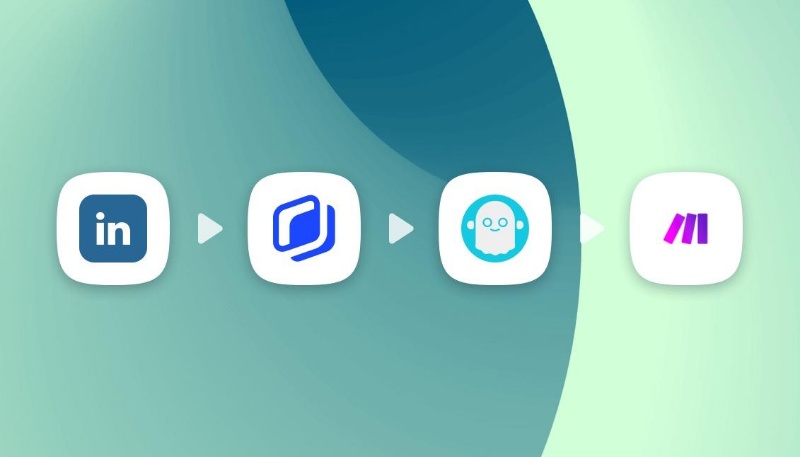
A lot of companies are currently stepping up their game in terms of Linkedin outreach. Don’t get us wrong, it is fun to see how creative these companies can get. Especially in how they use their Linkedin prospection tools! If you’re getting starting with Linkedin outreach, personalized images can help you differentiate yourself and boost your reply rate. Although it seems like a time consuming task at first, we have just the right tools for you!
In this tutorial we’ll see how to automatically send personalized and clickable images in your Linkedin cold messages (open graph images).
We often use an example to illustrate the process and give you a better understanding of its applications. This time is no different :
We are a SaaS company working on the B2B market. We developed a solution to help accountants manage their billings in a smarter & more efficient way. This is why our main target are people working in accounting services. To promote our product, we’re launching a linkedIn outreach campaign in order to reach them in a more personalized way. To differentiate ourselves from the daily flow of direct messages our audience receives, we’ll add personalized images to our Linkedin cold messages. Our goal today is to find an automatic process to extract our contact’s information & send them those personalized Linkedin messages.
Create a personalized image template
First things first, let’s design our personalized image template. Our goal here is to send a personalized image that will differentiate ourselves from the crowd. Keep in mind that this is a cold message, so it has to be short, clear and raise interest in a short amount of time. So we’ll focus on that when creating our template. Our proposition value has to be clear and we need to use personalization wisely to get our readers attention. Let’s get to it :
- Create an Abyssale account & create a new template
- Choose the right format. For Linkedin messages images, the right format to use is the linkedin_feed format
- Design your image. Down below is the example of what we’ve done for our use case.
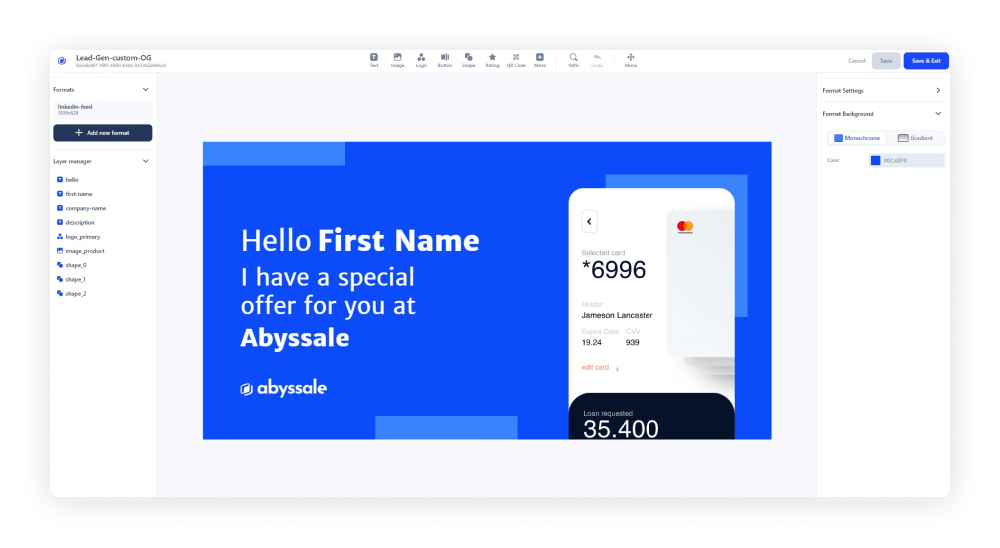
To make the rest of the process easier, it is important to clearly name the layers of your personalized image design. For us, it looks something like that :
- A hello layer
- a first-name layer (this one will be changing according to each one of our prospects)
All the other layers will not be changing during personalization. So our company-name, description, logo layer will stay the same and the others are just design elements.
But, if you want to personalize more layers you can. For example you can add your prospect company or their last name, you can change the image, really anything as long as it is data that you have in your posession.
Once you’re satisfied with your design click on the Save & Exit button.
Scrap the data we need to personalize our images
Now that we have our image, let’s get our listing ! To do so we’re using Phantombuster. It is a set of tools called phantoms that includes Linkedin Search export phantom. This phantom will allow us to extract a list of contacts from a Linkedin Search Result page.
- Log into your Phantom buster account
- If you’ve never done it before, you’ll have to install their Chrome extension & connect your Linkedin account.
- In the ‘Searches to scrappe” section we first name our search list & select People as we’re looking here to reach individuals.
Now in the “Behavior” section we have to set the number of results per search and per launch we want to extract.
Good to know : Be aware that it is preferable to run small searches, 10 by 10 for example several times a day than to run one big search. For example we set 30 results per search, 10 results per launch.
- Now in the settings section , we set the launch Repeatedly, Thrice per day (to reach the 30 results) and choose our notifications preferences.
- Now back on Linkedin we start our search. We search for accountants in Paris that have over 5 years experience and speak english.
Back on Phantom Buster we launch the Search export and wait for it to be done.
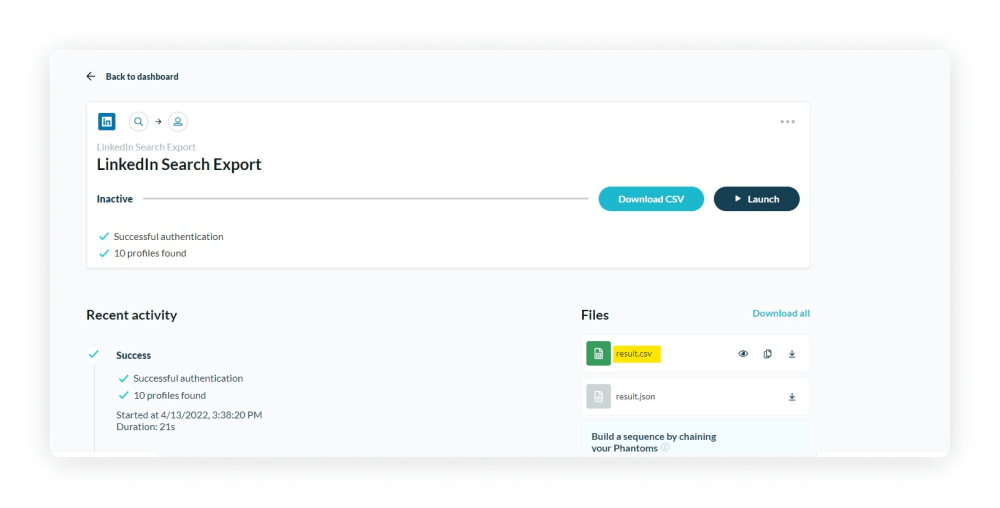
Then we download the results.csv file, and transfer it to a Google Sheet.
Organize our Linkedin contact data
On our Google sheet , we verify that our data has been imported correctly and that we have all the columns we need. This Google sheet file will serve as the base for the creation of our linkedin personalized images as well as the sending of our messages.
So for that, we’ll add another column where Make will be able to input a the link of our personalized and clickable image during the automation.

Before leaving this document make sure to have your Sheet available in public mode. If not, go into the Sharing setting and make it publicly accessible.
Automate the generation of our Linkedin personalized images
Now we’re about to begin the actual automation process. All we did before was preparation. To illustrate this step: It is as if we had to write a script of what should be done automatically.
- Log into Make (ex Integromat)
- Create a new scenario
This scenario here will have 4 modules . GSheets - Abyssale - Abyssale - GSheets. And our automation could be described with follwing sentence : We want Make to watch our Sheet document and add an abyssale personalized image in the image_url column for each contact and then make this image clickable before inputing the final link back into google Sheets.

#1 : Watch our Google Sheet rows
The instruction could be : “Look at the data I’ve just collected “
- Create a Watch rows GSheet module
- Connect your account, select the right file and the right sheet.
- Inform if your sheet contains headers, the rows to watch and the limit of rows to process you want to set.
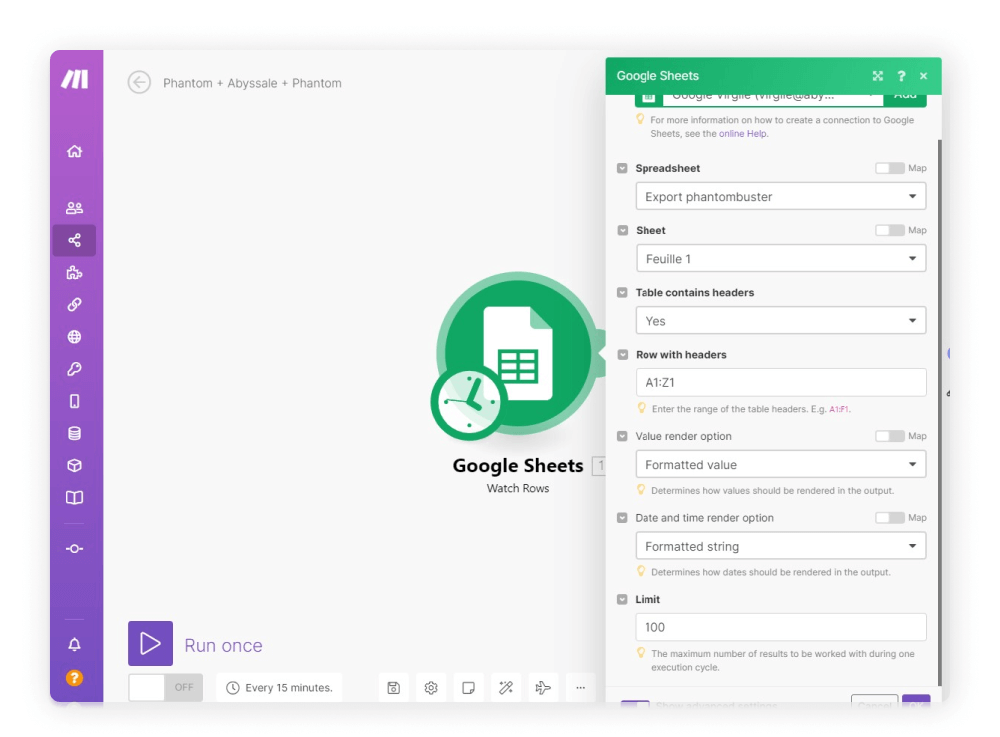
#2 : Generate the personalized images
Here the step could be described as : Use the data you’ve just collected from Sheets to generate an image with Abyssale.
- Create an Abyssale Generate Single image module
- Connect your account & select the template you’ve just created
- Now fill each one of your personalizable fields with your Gsheet data. In other words you have to match your layers (that you named in step 1 right ?) with the information you’ve collected in the first Google Sheet module.
Here we want to personalize our image with our contact’s first name, so we’ll match our first-name layer with our GSheet firstName column.
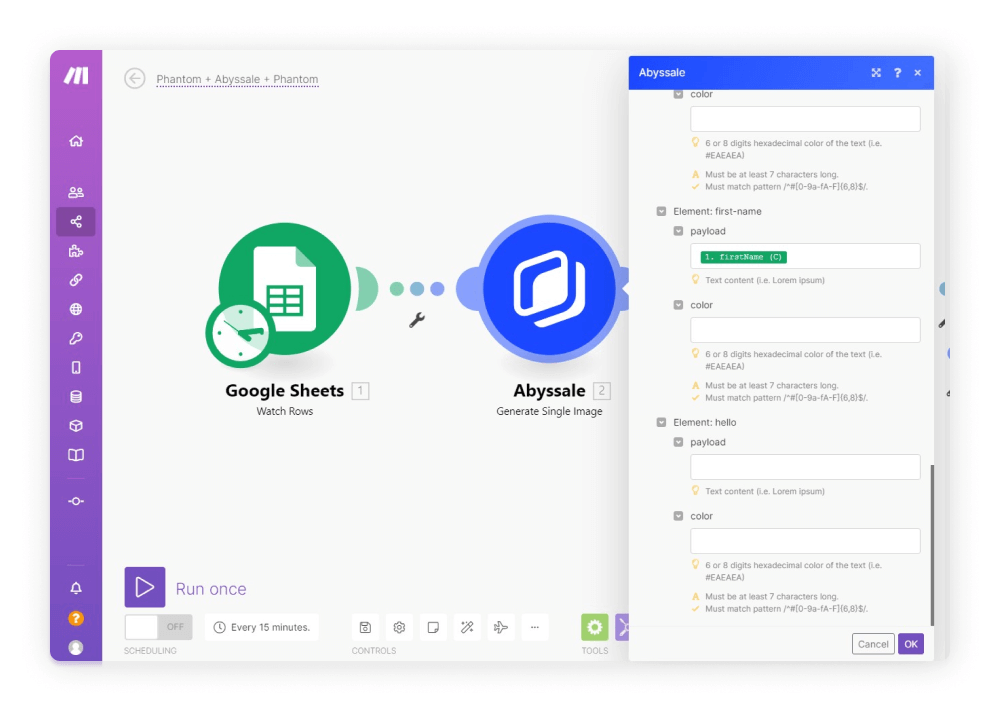
#3 : Make my personalized image clickable
Here the step could be described as : With the image you’ve just generated, create an open-graph link (clickable image).
- Create another Abyssale module, but this time select Generate Open Graph Link
- Insert your Target URL (As the goal here is to create a clickable image that refers to a link, for example a product page or a demo booking)
- For the image Url field make it match with the link of the personalized image we’ve just generated with Abyssale
- Finally, Set the meta title and description of your clickable image. Note that you can use data you’ve just scrapped with Phantom buster to personalize this text.
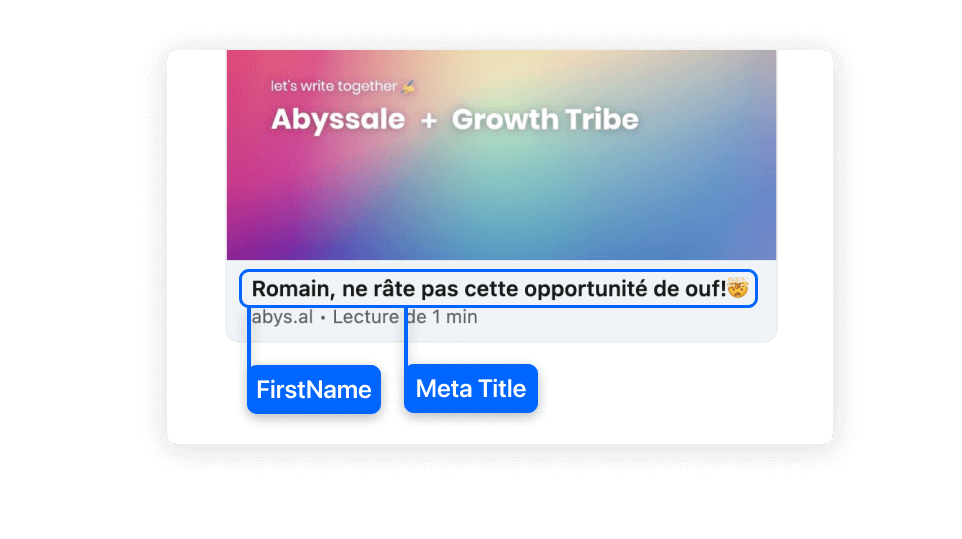
Pro tip : For the target url field, instead of just inserting your link normally, you can create UTM tags in order to be able to track data on your link (which person clicked on it for example). Here is a link to help you create one : Create a trackable link
At the end of our link we can add the firstName column of our GSheet so that we’ll have the names of each contact that has clicked on our link in our website tracking tool.
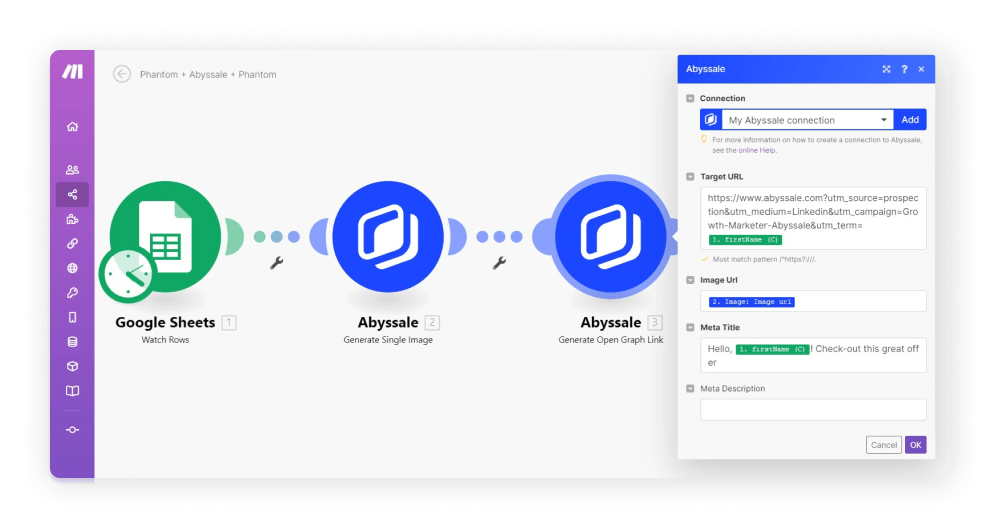
#4 : Send our personalized image link back to the right GSheet row
Now the instruction for this module : Send the Open Graph image link you’ve created back to the right Google Sheets row.
- Add a GSheet Update row module
- Select again your Spreadsheet your Sheet and make the row match with the “row number data” you’ve collected in the first module of our Make automation.
- Now you have to spot the column letter of your image_url column (the one we’ve created in step 3), ours is column R
- Now in the values section of your module you have all your columns. We go to the R one and fill this field with our Abyssale Open Graph link.
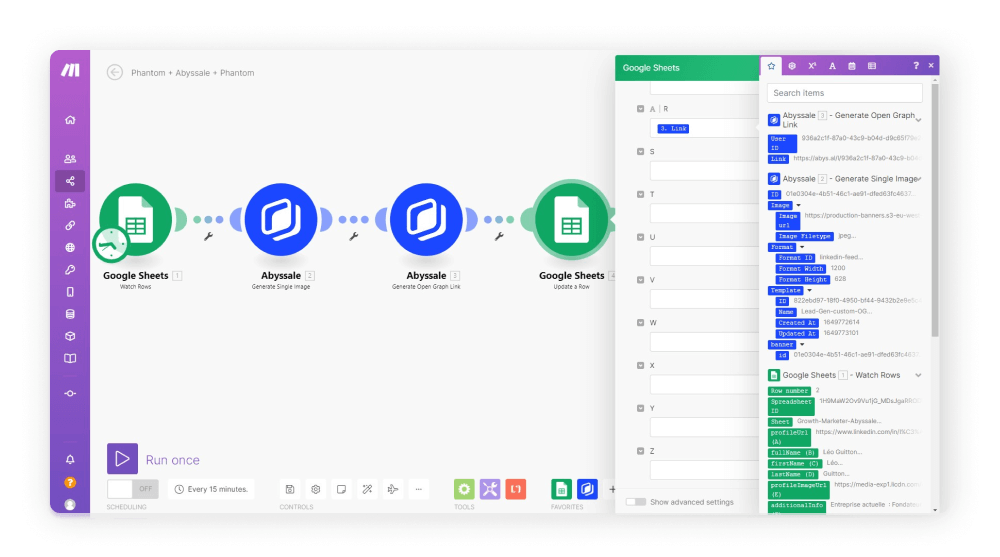
Now to make sure you’ve set-up your automation correctly, run your module once. Every module should appear in green at the end of it. Then go back to your Gsheet and you should see your last column filled with personalized images URLs.
#5 : Send our Personalized and clickable image with Linkedin
For this last step we’re back on Phantom buster and this time we’re using the LinkedIn Network Booster Phantom to send our Linkedin outreach messages!.
- In the Profiles to invite section choose the get form Spreadsheet URL option
- In Spreadsheet settings typ the name of the GooglSheet column that containes the url of the linkedin profile we want to message (ours is profile Url)
- Moving on to the Message content section. You can write your own cold message and insert your personalized image link 🔥.
- To personalize your message, insert the name of the column where your data lives inbetween to #. For example if you have a column name FirstName, you should insert #FirstName# in your message.
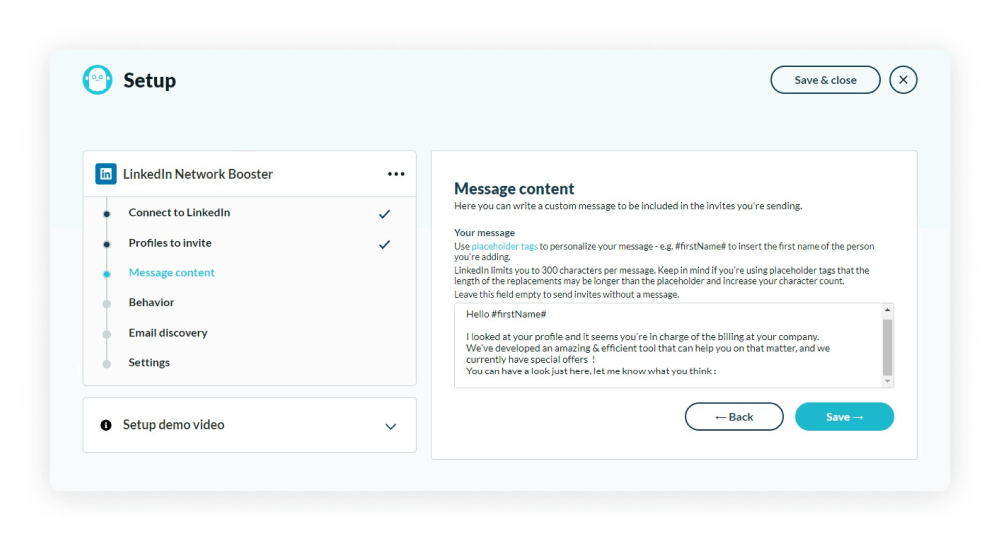
- Inside your message insert the link of your image_url column (the personalized image link generated by abyssale) using the same system. For us it is going to be #image_url#
- Now you can set your Behavior and email discovery settings. In order to preserve your Linkedin account, we recommend to process a maximum of 10 contacts per launch and launch your phantom 8 times per day or less.
- When everything is ready, launch your Phantom.
To show you the final result, here is one example of the invite we’ve send :
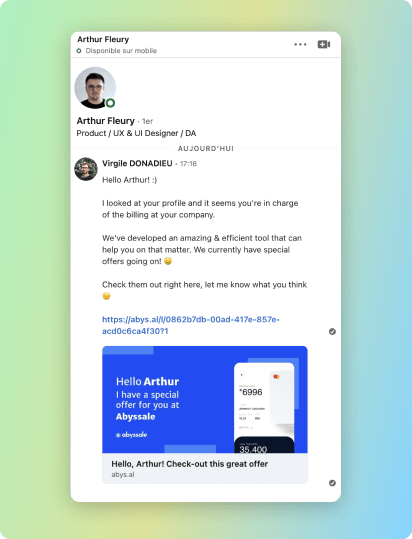
Congrats!!!! You're now ready to take your Linkedin outreach to the next level! Here at Abyssale, we've seen a 47% increase in reply rates when personnalized open graph images have been added to our messages. If we can do it, we can to! If you're not familiar with Phantom buster and maybe use a tool like Waalaxy, you can check-out our other article on how to send personalized images with Waalaxy.
Get started for free
Master Abyssale’s spreadsheet
Explore our guides and tutorials to unlock the full potential of Abyssale's spreadsheet feature for scaled content production.

How To Bulk Upload Product Images In Shopify?
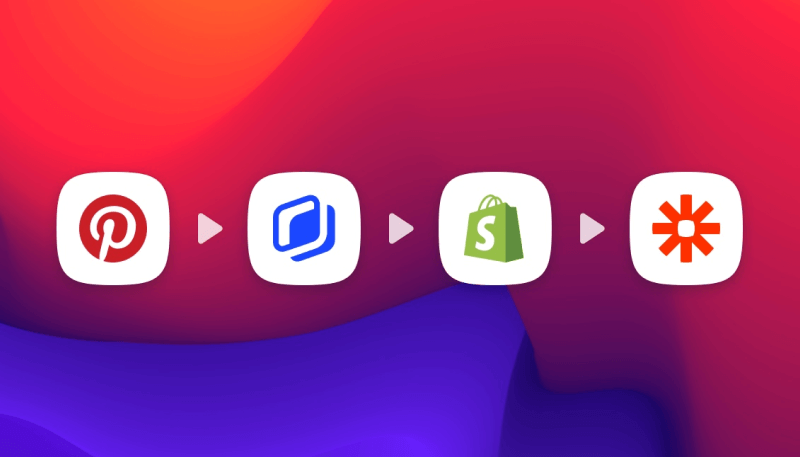


.webp)


